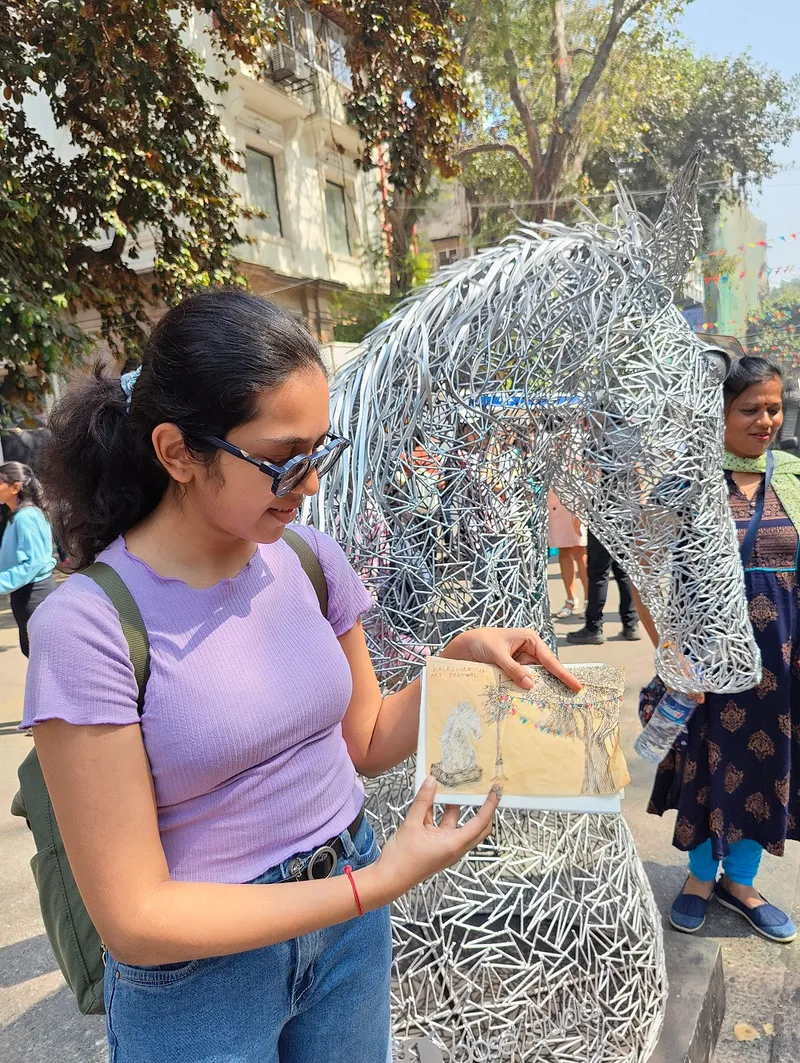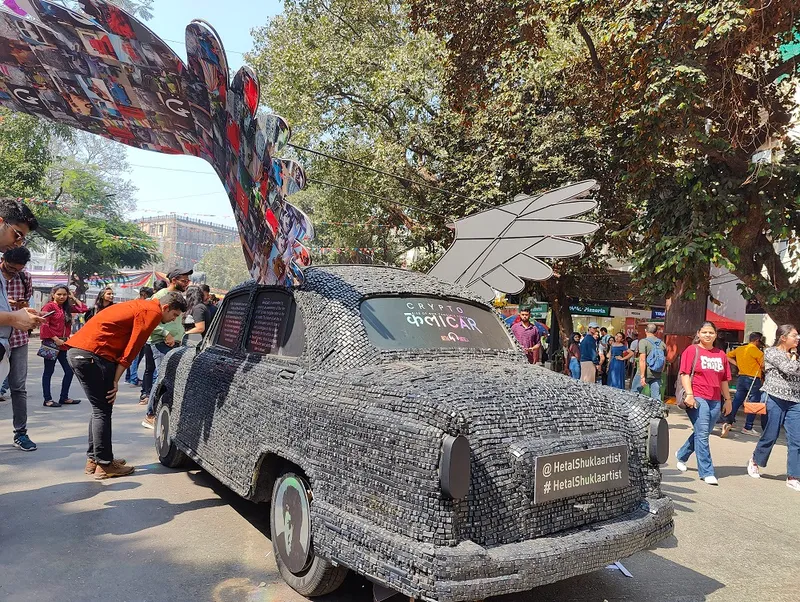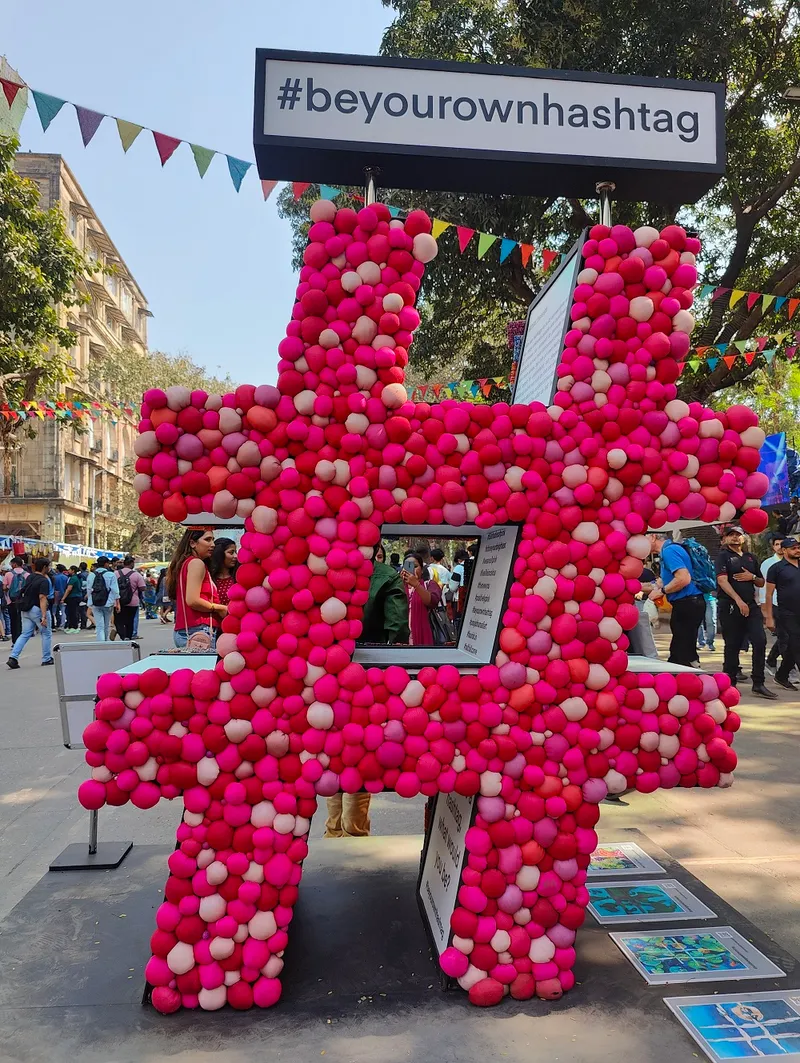Kala Ghoda Arts Festival brings a myriad of masterclasses in culture, folk traditions
The nine-day fest in Mumbai, back after two years, reminded us why folk traditions and art can provide a much-needed beacon of hope in these times.
In-person events are back with a bang, showing us why we needed them so much. The Kala Ghoda Arts Festival (KGAF), which took off in Mumbai after a two-year gap, is a prime example of culture making a 360-degree turn. It went virtual in 2021 and skipped in 2022.
Regarded as the bastion of art festivals, the nine-day extravaganza swung back into its iconic art district venue a few days ago. Ever since, it’s been thronging with crowds, happy faces, families with kids in tow, a bunch of artists, tourists, and others.
YS Life caught the folk art, food, and fun at one of India’s most famous festivals. One thing was clear: There’s nothing like having the soothing touch of tradition and culture in our lives.

The Kala Ghoda Arts Festival was back after two years at its iconic venue in Mumbai
Art stands for hope
Over the week, the art district lane was unmissable with colourful flags and banners transforming the quiet area into a thriving, pulsating space. Once inside the festival, it was like embarking on a trip around India.
Stalls showcased Gujarat’s famous ajrakh (hand-block work) work, Rajasthan’s block printing and pichwai, West Bengal and Odisha’s pattachitra paintings, pretty weaves from Nagaland, beadwork from Uttar Pradesh, pottery and porcelain.
For artists, architects, and designers arriving from different quarters of the country, being at the Kala Ghoda meant a resurgence of hope in the post-COVID times.
Ankita Keisham, a Manipur-based artist who set up a stall with water reed (kauna grass) bags, was grateful for the footfalls after the tough times during the pandemic.
“We did no business at all in the last two years. Things grew worse as we had to pay our craftsmen plus use the money for daily expenditures and ended up finishing our savings,” she admitted.

A stall with traditional metal handicraft from Bidar, Karnataka
A few steps away at the Samoolam stall, bohemian-style crochet jewellery made by women artisans from Bihar grabbed onlookers’ attention. Bidri handicraft from Bidar, Karnataka, also saw a bunch of admirers for their metal handicraft with silver inlay.
Ramnarayan Prajapat, who arrived from Kot Jewar village in Jaipur, was there to promote awareness about Jaipur’s GI-tagged blue pottery.
Pointing to his array of vases, tiles, trays, etc., he shared that the pottery is not made with actual mud. Instead, it’s put together with quartz stone powder, multani mitti (fuller’s earth), katira gond powder (a gum), and other natural eco-friendly ingredients. “One of its biggest advantages is that it’s lighter than ceramics,” he informed.
The centuries-old craft—once patronised by palaces and kings—is a dying art form waning in the face of modern ceramics, and craftsmen like him struggle to keep its labour-intensive skill alive.
Outlining some of the challenges, Ramnarayan said, “We have transport issues in our far-off villages. Also, many people are copying and passing off other painted products in the name of blue pottery. Getting people to experience and learn about it in cities will make a big difference.”

Khushali Shah, part of an urban sketchers group captured the vibe with a sketch
One morning, we also caught a local group of urban sketchers—pencils in hand—as they tried to capture the vibe around them. Among them was Khushali Shah, who said, “South Mumbai has history, and that blend of now and then that one cannot see in other parts of the city. Strangers have stopped to see what we were doing and ask about our art, and it feels nice to get that kind of appreciation.”
The value of humour
Kala Ghoda saw multiple events taking place close by. Workshops on pottery and painting, walking and bus tours around Mumbai’s iconic avenues and buildings, music concerts, and cinema and theatre—all heralding the same message of positivity.
Laughter, as a well-known alternate wellness therapy, had its own special place at the festival. Two-hour shows hosted by Rohan Desai with stand-up comedians brought in much-needed mirth with the theme, ‘Go ahead and Laugh!’

Who wants a ride in a crypto-car? This installation is a nod to the quirky art trend that took the world by storm
Tucked away in the woods, Echoes of Earth was a musical spectacle like no other
Urjita Wani, who was doing an improvised stand-up show, was bang-on about being there as she grinned, “The world functions way too randomly for us to take it seriously. So, why not let our guard down once in a while? In fact, I feel that it should be compulsory for everybody to attend a stand-up show every week!”
Another stand-up comic, Tarang Hardikar, underlined the value of performing in a busy city. “I would love for the city to have more performance venues in general. When there are diverse venues—some of which are open-air, some restaurants and some comedy clubs—it gives us the opportunity to perform in different settings, which is way more fun,” he admitted.
Folk music got an update
Music made for a learning note here, giving folks a closer look at today’s contemporary sounds with diverse folk representations in music.
Mumbai-based fusion band Bombay Bandook’s blend of raag-based melody in a modern aesthetic was all about that. The band aims to bring change to the current independent scene. “The fusion scene in this country is beautifully intricate. But while one might bet on Indian classical-based acts in 'India' as an evergreen trend, the reality is that it's more of a niche.” said Brijesh Joshi, guitar player of the band.
“We not only wanted to introduce classical heads to more modern sounds and music but also introduce Eastern music fans to Indian classical music,” he said.
Carnatic fans were in for a treat, too. Mahesh Raghvan, who collaborated with Indian violinist Nandini Shankar who lend a modern electronic touch to Carnatic classical music, shared how their goal is to introduce people to the beauty of classical melodies that feels relatable and fresh.
“We believe that traditional music is great in its own right, but by adding elements of other genres like electronic music, we are creating a unique sound that appeals to a wider audience and brings them closer to their roots,” he explained.

Zany intallations grabbed attention at the Kala Ghoda Arts Festival
If you’ve grooved to ‘Dilbaro’, ‘Dholida’, and ‘Chogada’, you’ll know they are all popular folk songs in Hindi movies. One of the segments captured this very trend.
Indian playback singer and actress Priyanka Barve, who presented a variety of bhaavgeet, thumri, ghazal, sufi, folk, natya geet, and lavni, explained how folk music finds increasing representation in Bollywood today.
She noted, “It’s great to see this as the presence of folk music as it directly connects you to the roots. Being able to perform at such a platform gives people a chance to learn and understand this better.”
Looking back, while also looking ahead
The theme for this year’s edition is ‘Past Forward’, which talks about celebrating the past and embracing the future, and that was evident in the big highlight at the festival—the return of the Colonial Cousins, who revived some of their famous tunes from the ’90s!
Kala Ghoda Festival director Brinda Miller added, “The theme pays tribute to our legacy of 22 years while also looking at the future. It is about a gradual emergence from a period of inactivity to an era heralding positivity, change, and progress.”
Calling it one of the biggest arts festivals in Asia, she said, “It’s really exciting to have it back on the ground as art and culture are an intrinsic part of the city. In the lives we lead, let’s not forget the positivity and energy the arts can bring to it.”
(Story was updated to fix a typo)
Edited by Suman Singh







